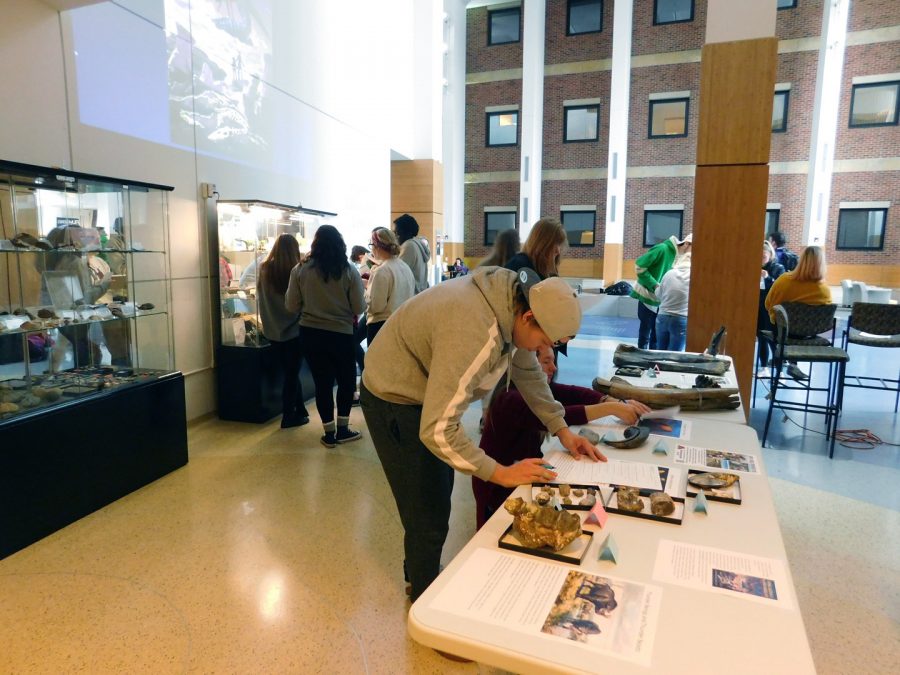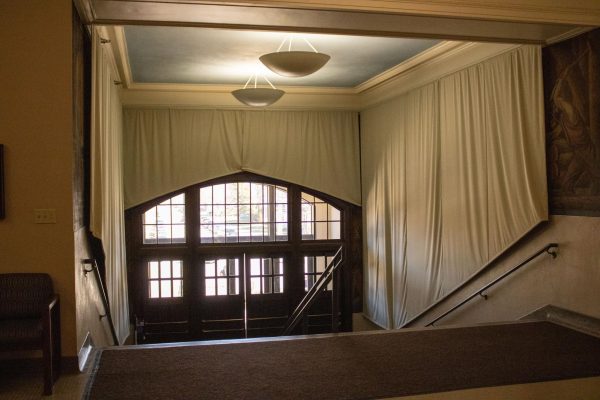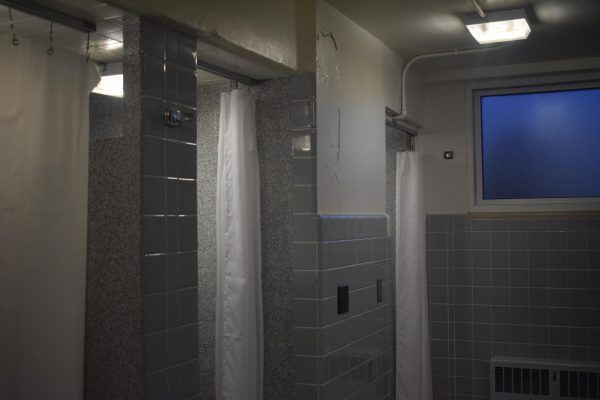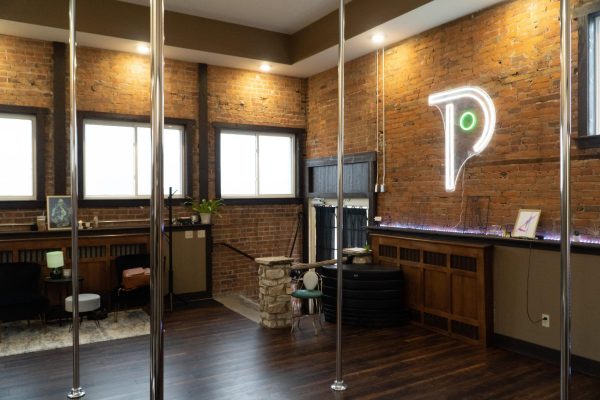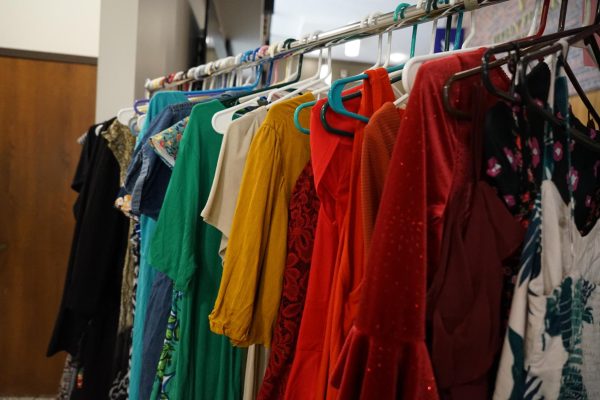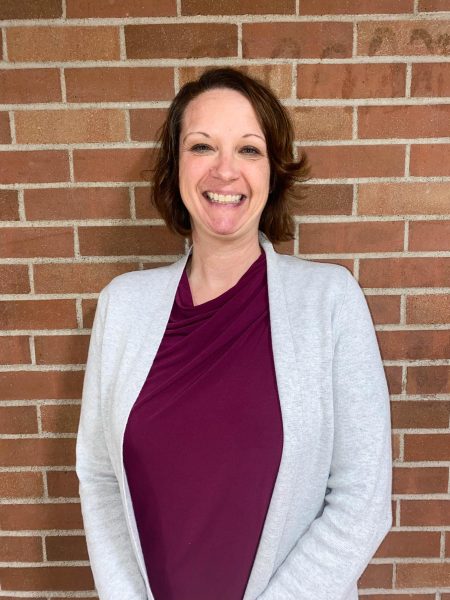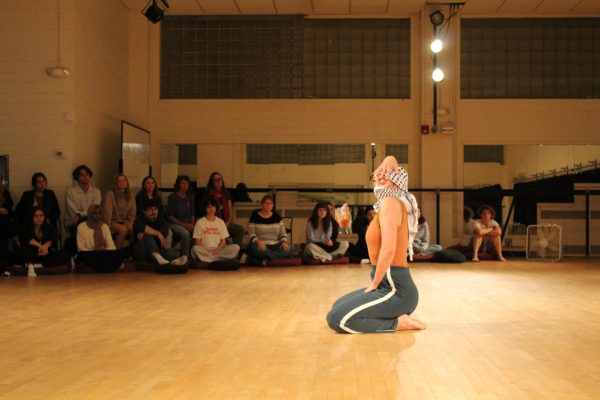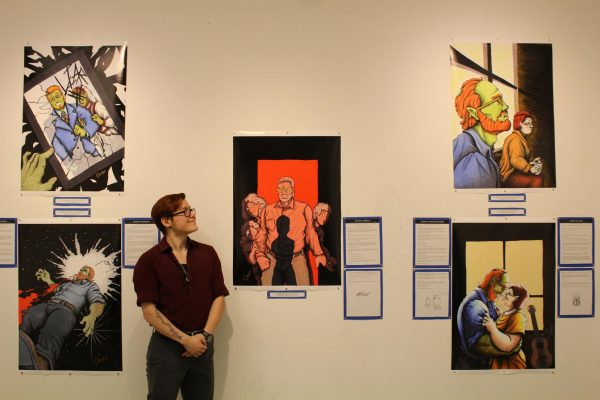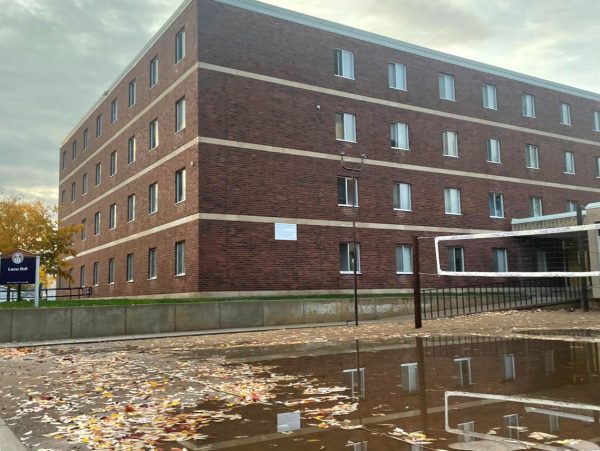Winona hosts National Fossil Day
A celebration of National Fossil Day was held on Wednesday, Oct. 16 in the SLC Atrium, students could view and touch some dinosaur fossils and participate in a mock dinosaur dig during the event.
October 23, 2019
Winona State University celebrated National Fossil Day with an interactive fossil display on Oct. 16.
The display was held in the Science Laboratory Center (SLC) atrium from 12:30 – 4 p.m. and was sponsored by the geoscience department.
Visitors were able to touch bones and fossils, including dinosaur and mammoth preservations.
“We have some t-rex fossils, some triceratops fossils, ones everybody knows,” associate geoscience professor W. Lee Beatty said. “But there are also a lot of fossils in there that I think people wouldn’t expect to find.”
National Fossil Day was established in 2010 by the National Park Service to promote public awareness and appreciation for fossils and their value.
Nationwide, over 270 partners participate in the day of appreciation, including museums, libraries and universities like Winona State.
A major source of the fossils on display for the annual event is Hell Creek Fossils, a company operated by Winona State alums, James Reed and Adam Schroeder.
Hell Creek Fossils is a dinosaur fossil dig located in the badlands of North Dakota. The public can sign up to participate in an excavation and get to utilize Hell Creek’s various locations to hunt for fossils.
Since the creation of Hell Creek Fossils in 2015, students from Winona State have gone on academic trips to the site of the Hell Creek formations to dig.
The trip is open to all students and geoscience and biology majors can earn credit for it, with capstone opportunities available. This year’s trip in 2020 will be the sixth year.
Students and accompanying faculty work right on site with a field lab and camp out on private ranch land. The site has running water, a kitchen and other amenities for the week-long trip.
“If you have ever, ever, ever wanted to go on a dinosaur dig, this is your opportunity to do it,” Beatty said. “So, go out and do it.”
Not every year’s Hell Creek fossils are put on display for National Fossil Day, but a collection of the last three to four years’ worth were included.
Each year’s display has a different theme to switch things up and display numerous kinds of fossils. This year’s theme was celebrating Native American’s discoveries and interpretations of fossilized remains.
“There were fossils from sites on the great plains,” Beatty said. “A few dinosaur fossils from Wyoming, some marine fossils from South Dakota and Mammoth fossils from Minnesota.”
Next to each selection of fossils were informational sheets describing their connection to Native American interpretations, including native legends and research into understanding of fossils from millions of years ago.
The Hell Creek formation, where the fossil digs occur for many of the fossils on display, is 66 million years old.
In that time, states like North and South Dakota, Wyoming, Montana and parts of Southern Canada were under water. After the oceans receded, those areas became much like a coastal area with lots of sand and mud. In those places, fossils lay buried.
The Hell Creek formations hold much more than dinosaur fossils, including crocodiles and turtle fossils, sharks and rays, as well as preserved vegetation.
“I have students right now working on a site where we have all kinds of leaves preserved,” Beatty said. “So that’s giving us a good idea of the different tree species at the time.”
Many students attended and interacted with the fossil display, some coming from courses such as Intro to Paleontology and Dinosaurs and junior and senior paleontology students, as well as others who were simply curious.
“The displays are really cool since we can actually touch a lot of the fossils instead of just looking at them from behind a display,” Diana Zargarian, a sophomore nursing major said.
Zargarian went on to say that although she is not in any geoscience courses, she was curious as to what the displays were for in the SLC atrium and was pleased that she decided to take a look.
The Hell Creek fossils currently on display in the SLC are permanent, however the Native American interpretations set up for National Fossil Day are not.
Beatty is looking into setting up a permanent display for the interpretations that may be arranged in the next year.























































